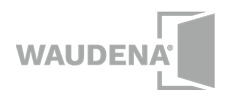Leveraging Trade Tariffs: How Chinese-Made Best Steel Exterior Doors Thrive Amidst US-China Tensions
In recent years, the tumultuous US-China trade relations have significantly shaped global market dynamics, leading to an unexpected boon for specific sectors, particularly the steel exterior door industry. According to market research conducted by Allied Market Research, the global steel door market is projected to reach $6.2 billion by 2026, with a compound annual growth rate (CAGR) of 5.3%. Despite heightened tariffs and trade barriers, Chinese manufacturers of steel exterior doors have showcased resilience, capitalizing on their competitive pricing and robust production capabilities. This trend underscores a shift in consumer preferences towards cost-effective, durable options as professionals seek to balance quality and affordability amidst rising material costs. As the trade tension persists, the adaptability of Chinese-made steel exterior doors not only signifies their unwavering market presence but also highlights the intricate interplay between geopolitical factors and consumer demand in the construction industry.

Understanding the Impact of Trade Tariffs on the Steel Industry
The ongoing US-China trade tensions have significantly reshaped the landscape of the steel industry, particularly affecting the manufacturing and distribution of imported goods like steel exterior doors. According to the American Iron and Steel Institute, the imposition of tariffs has resulted in a nearly 20% increase in domestic steel prices, prompting manufacturers to adapt their strategies. Chinese companies, known for their cost-efficient production methods, have found opportunities to thrive by enhancing their competitive edge while navigating these tariffs.
For manufacturers considering entry into this evolving market, focusing on quality and compliance is crucial. According to a report by Grand View Research, the global steel door market is expected to reach USD 4.8 billion by 2025, driven by increased construction activities and residential renovations. Thus, ensuring that products meet both U.S. standards and evolving consumer preferences is vital.
Tip 1: Leverage the rising demand for energy-efficient and customizable doors by integrating advanced materials and designs that cater to modern homebuyers' needs.
Tip 2: Regularly monitor tariff updates and trade regulations to adjust pricing strategies and maintain profitability while staying competitive against domestic and international players.
How Chinese Steel Exterior Doors Maintain Growth in a Competitive Market
In a competitive landscape dominated by constantly shifting consumer preferences and geopolitical tensions, Chinese steel exterior doors are carving out a sustainable growth trajectory. Despite trade tariffs and restrictions impacting the flow of goods, these doors have thrived by focusing on quality, innovation, and affordability. The adaptability of manufacturers in adjusting to market demands has enabled them to maintain strong sales figures, even in challenging circumstances. By leveraging advanced manufacturing technologies and sourcing high-quality materials, these products continue to meet the evolving needs of consumers seeking durability and style.
Moreover, the growth of the global smart lock market, projected to reach USD 10.74 billion by 2033, complements the demand for steel exterior doors. As more homeowners seek integrated security solutions for their homes, the combination of robust steel doors with smart locking mechanisms is increasingly appealing. This synergy not only enhances the aesthetic and functional value of properties but also positions Chinese-made exterior doors as an attractive option in the real estate market. The continued innovation in security features and aesthetics solidifies the standing of these products amidst fierce competition.

The Role of Quality and Innovation in Chinese Manufacturing
Amidst the escalating tensions between the US and China, the steel exterior door market has witnessed a surprising resilience, particularly from Chinese manufacturers. The key to this success lies in their unwavering commitment to quality and innovation. Chinese steel door producers have invested heavily in advanced manufacturing technologies and processes, allowing them to produce doors that not only meet but often exceed international quality standards. This focus on high-quality materials, combined with robust engineering, ensures that their products stand the test of time, catering to a discerning consumer base.
Additionally, innovation plays a crucial role in setting Chinese-made steel exterior doors apart from their competitors. Manufacturers are embracing design trends and incorporating energy-efficient features that align with contemporary consumer demands. By leveraging research and development, these companies are continually refining their offerings, introducing customization options, and enhancing aesthetic appeal while maintaining durability. As a result, even in the face of trade tariffs, Chinese steel doors thrive by delivering exceptional value, proving that quality and innovation are pivotal in navigating the complexities of global trade dynamics.
Leveraging Trade Tariffs: How Chinese-Made Best Steel Exterior Doors Thrive Amidst US-China Tensions
| Dimension | Details |
|---|---|
| Manufacturer | ABC Steel Doors Co., Ltd. |
| Country of Origin | China |
| Material | Galvanized Steel |
| Weight | 150 lbs (68 kg) |
| Insulation | Polyurethane Foam Core |
| Thermal Rating | R-Value 16 |
| Color Options | White, Black, Brown |
| Warranty | 10 Years |
Strategies for Chinese Manufacturers to Navigate US-China Trade Tensions
As US-China trade tensions escalate, Chinese manufacturers of steel exterior doors have developed strategic approaches to navigate the complex landscape. Recent data from the International Trade Administration indicates that in 2021, there was a 25% increase in tariffs on Chinese steel products, which has compelled manufacturers to innovate and optimize their production processes. By focusing on quality and cost-efficiency, these companies are not only mitigating the impact of tariffs but also positioning themselves favorably in the market.
Additionally, integrating advanced manufacturing technologies and enhancing supply chain resilience have become critical strategies. According to a report by McKinsey & Company, manufacturers that adopt automation can reduce production costs by up to 30%, allowing them to offer competitive pricing even amid tariff challenges. This proactive stance is further supported by market data suggesting a growing demand for steel exterior doors, projected to reach $3 billion by 2025 in the US market. By leveraging these insights, Chinese manufacturers can effectively shield themselves from the adverse effects of trade policies while capitalizing on emerging opportunities.
Consumer Preferences: The Shift Towards Affordable Chinese Steel Products
The recent escalation in US-China trade tensions has inadvertently shifted consumer preferences towards affordable Chinese steel products, particularly in the market for exterior doors. According to a report by the American Iron and Steel Institute, the cost of steel sourced from domestic producers has risen by approximately 15% over the past year due to tariffs. This price hike has compelled consumers to seek out more competitively priced alternatives, with many turning to Chinese-made steel doors, which often come with lower price tags and comparable quality.
As consumers become more budget-conscious, the demand for Chinese steel products has surged. A study from IBISWorld indicates that the market share for imported steel products has increased by nearly 20% in the last two years, with a significant portion attributed to the attractiveness of Chinese-made goods. These doors not only meet aesthetic and functional needs but also align with the desires of cost-sensitive consumers looking for durability without breaking the bank. The trend illustrates a broader pivot in consumer behavior where affordability takes precedence, highlighting the resilience of lower-cost imports even amidst economic uncertainty.


